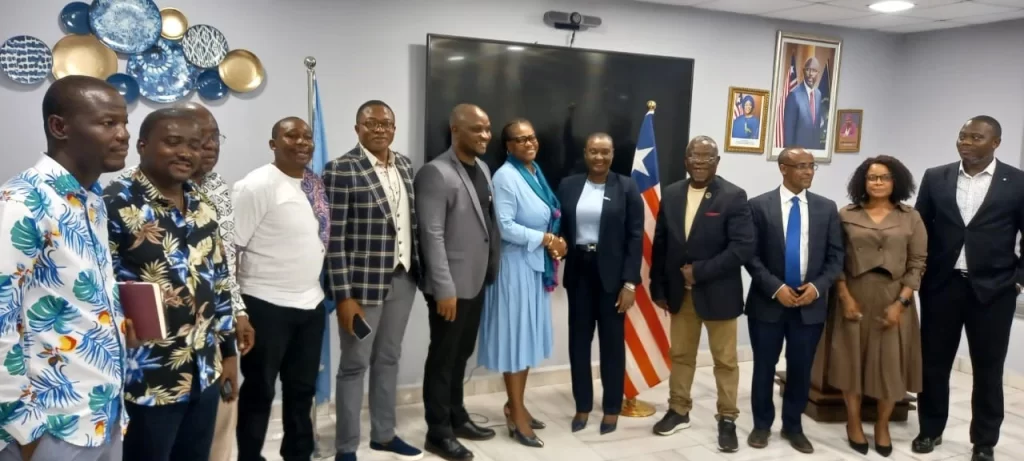Monrovia, Liberia – In a landmark step toward modernizing its fisheries sector, the Government of Liberia, through the National Fisheries and Aquaculture Authority (NaFAA), is set to launch semi-industrial fishing operations in marine waters beyond four nautical miles off the country’s coastline. The move, which marks a strategic shift in fisheries governance, comes after the successful validation of Liberia’s first-ever Semi-Industrial Fisheries Management Plan.
Held at NaFAA Headquarters on Bushrod Island, the validation workshop gathered a host of national and international stakeholders to review and endorse the blueprint for Liberia’s semi-industrial fisheries sub-sector. The initiative is being hailed as a transformative policy measure aimed at strengthening the regulation, sustainability, and economic potential of Liberia’s Exclusive Economic Zone (EEZ).
A New Chapter for Fisheries
Acting Director General of NaFAA, General J. Cyrus Saygbe Sr., emphasized the significance of the validated plan, describing it as both “timely” and “strategic.” He underscored its role in positioning Liberia as a credible and attractive destination for sustainable fisheries investment.
“This Management Plan is not only timely but also strategic in ensuring that our semi-industrial fisheries are properly regulated and positioned to attract sustainable investment,” Saygbe noted.
According to Mr. Saygbe, the government has already completed and published the formal demarcation of Liberia’s four-nautical-mile zone, a prerequisite for allowing semi-industrial fishing vessels to operate beyond this limit. This delineation ensures that artisanal fisheries closer to shore are protected, while semi-industrial activities can take place under regulated conditions further offshore.
Anchored in Transparency
Liberia’s fisheries ambitions are firmly anchored in principles of transparency and accountability. During the event, Saygbe reaffirmed Liberia’s commitment to global transparency protocols, pointing to its recent endorsement of the Global Charter of Fisheries Transparency and active membership in the Fisheries Transparency Initiative (FiTI).
“We are working to build a sector that is transparent, inclusive, and investment-friendly,” Saygbe said, urging all participants to contribute openly to the validation process and future implementation phases.
Government Support and Stakeholder Collaboration
Deputy Minister for Technical Services at the Ministry of Agriculture, Hon. Solomon Hedd-Williams, commended NaFAA’s leadership in crafting the Management Plan but called for firmer enforcement mechanisms. He emphasized that without strong regulation, the country risks losing the developmental benefits the plan aims to deliver.
“We must tighten the screws on enforcement if we are to achieve meaningful, inclusive development in line with the Government’s ARREST Agenda,” said Hedd-Williams, referring to Liberia’s broader national development strategy.
The workshop drew participation from Liberia’s international partners, including the European Union, which has supported several fisheries development efforts across West Africa. EU Representative Maria Winnubst praised the plan’s strategic scope but stressed the importance of protecting artisanal fishers’ livelihoods.

“Balancing industrial development with the interests of coastal communities must remain central to the plan’s implementation,” she stated.
In a gesture of unity, the President of the Liberia Artisanal Fishermen Association pledged his organization’s full support, reinforcing the collaborative spirit that underpins the plan.
A Vision for Sustainable Exploitation
The validated Semi-Industrial Fisheries Management Plan lays the groundwork for sustainable resource use over a five-year implementation period, with a mid-term review planned after the second year. The plan integrates fisheries-dependent and independent assessments to guide decision-making and ensure ecosystem health.
Key objectives of the plan include:
- Sustainable resource exploitation through scientific monitoring and data-driven regulation.
- Increased revenue generation by expanding Liberia’s fisheries value chain.
- Improved livelihoods for coastal populations through job creation and fair participation.
- Enhanced governance and enforcement via legal frameworks and stakeholder engagement.
Charting a Blue Future
With this strategic framework in place, Liberia is poised to unlock the untapped potential of its marine resources. The plan not only enhances the country’s food security and economic prospects but also demonstrates a strong political will to align with global sustainability goals.
As NaFAA and its partners prepare to roll out the semi-industrial fisheries program, Liberia is emerging as a regional example of how thoughtful policy, stakeholder inclusion, and transparency can drive the responsible growth of a blue economy.